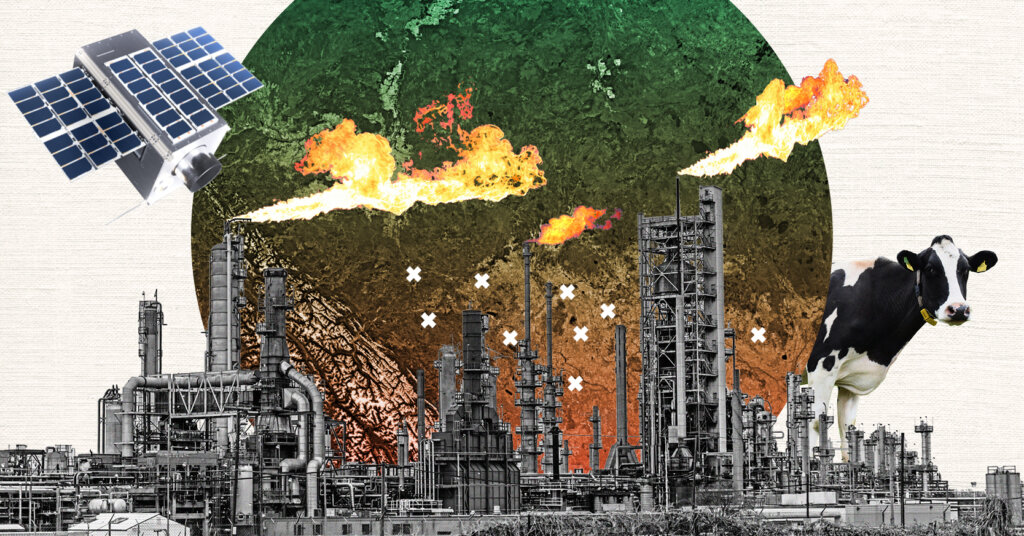Home » A Simple Climate Solution With Potential for Huge Impact
A Simple Climate Solution With Potential for Huge Impact

Methane, a potent greenhouse gas made up of carbon and hydrogen, plays a significant role in climate change, often overshadowed by carbon dioxide. While methane is far more effective at trapping heat—being about 80% more potent than CO2 in the short term—it remains in the atmosphere for a shorter period (around a decade) compared to CO2, which can linger for centuries. Since the Industrial Revolution, methane has been responsible for nearly a quarter of global warming, with approximately 60% of emissions stemming from human activities such as agriculture, waste management, and fossil fuel production. Natural sources, primarily wetlands, also contribute to methane emissions.
Experts, including those from the UN Environment Programme, highlight the potential for relatively straightforward and effective reductions in methane emissions, which could offer immediate cooling benefits in contrast to the longer timelines required for CO2 reductions. For example, Stéphane Germain from GHGSat notes that addressing just one tonne of methane is equivalent to mitigating 80 to 90 tonnes of CO2 in terms of warming potential over a 20-year period.
The primary sources of methane emissions include agriculture (especially livestock), where cattle contribute significantly through digestion processes, rice production, landfills, and the fossil fuel industry. In Canada, landfills accounted for 17% of methane emissions in 2022, while fossil fuel activities introduced almost 120 million tonnes of methane into the atmosphere in 2023. Alarmingly, it is estimated that the U.S. wastes approximately $2 billion worth of gas annually—enough energy to power 10 million homes.
To reduce methane emissions effectively, remediation strategies can be put into place, focusing on human-driven sources. Repairing leaks in pipelines, improving the management of organic waste to prevent landfill emissions, and implementing gas capture technologies can significantly lower methane levels. The International Energy Agency has indicated that the oil and gas sector could achieve a 75% reduction in methane emissions using currently available technologies. Additionally, capturing and utilizing methane creates opportunities for revenue generation and energy production.
Detecting methane leaks is inherently challenging, given its colorless and odorless characteristics. GHGSat has pioneered the use of satellite technology to locate and measure these emissions using spectroscopes that identify the unique spectral signatures of methane. In detecting leaks globally, GHGSat reported finding approximately 378 million tonnes of methane in 2023, with six million tonnes mitigated—an equivalent of removing 1.4 million gas-powered vehicles from roads for a year.
Additionally, efforts to address methane emissions have gained international traction through initiatives like the Global Methane Pledge, launched by the U.S. and European Union at COP26, which commits participating countries to cut global methane emissions by at least 30% from 2020 levels by 2030. However, this pledge is voluntary and non-binding, and several major emitters, such as China and India, have not committed.
Navigating the geopolitical landscape surrounding methane emissions requires a collaborative approach. GHGSat works with operators to share leak data and promote actions that mitigate emissions. While cooperation is welcomed in some regions, skepticism exists in others regarding the motivations behind emissions data. Germain emphasizes the importance of adapting communication strategies to foster trust and encourage actionable change.
Overall, effectively addressing methane emissions is crucial for immediate climate benefits, requiring concerted efforts at both industry and global levels to make significant progress.
MaRS Discovery District
https://www.marsdd.com/
MaRS is the world's largest urban innovation hub in Toronto that supports startups in the health, cleantech, fintech, and enterprise sectors. When MaRS opened in 2005 this concept of urban innovation was an untested theory. Today, it’s reshaping cities around the world. MaRS has been at the forefront of a wave of change that extends from Melbourne to Amsterdam and runs through San Francisco, London, Medellín, Los Angeles, Paris and New York. These global cities are now striving to create what we have in Toronto: a dense innovation district that co-locates universities, startups, corporates and investors. In this increasingly competitive landscape, scale matters more than ever – the best talent is attracted to the brightest innovation hotspots.


